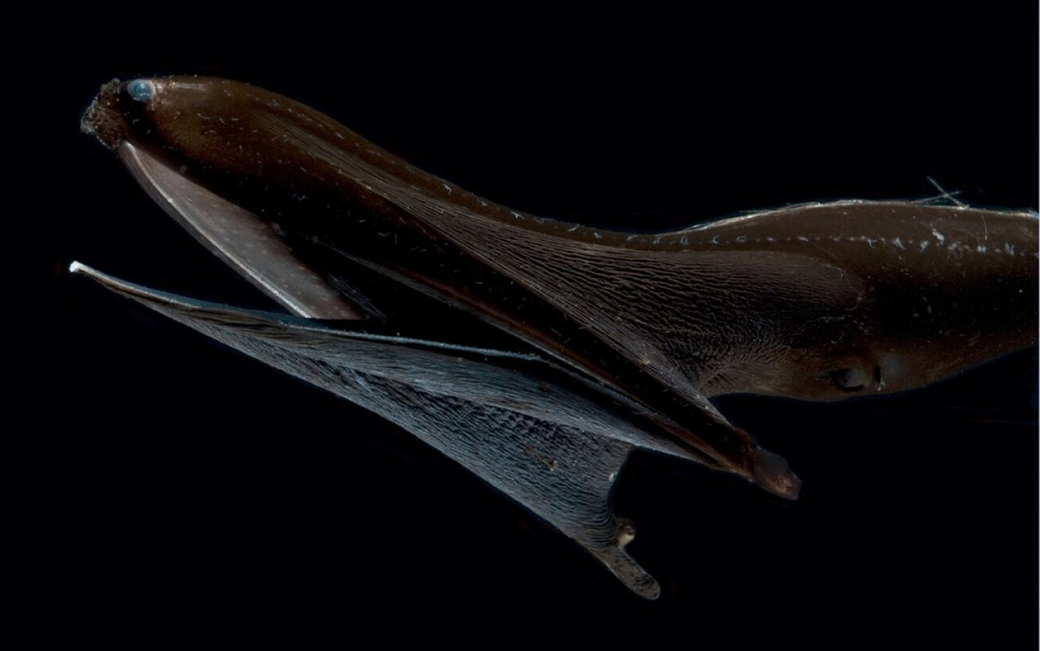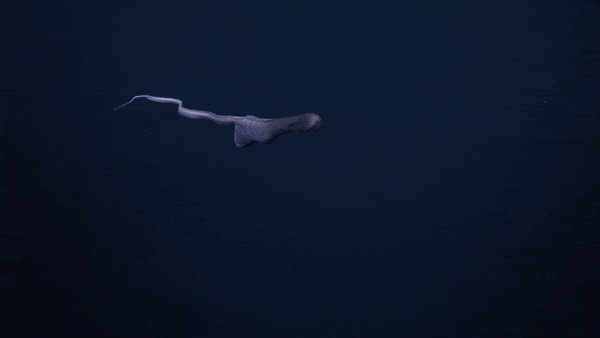Ultra-black eels that stalk the ocean's midnight zone all have the same strange skin and scientists now know why
Elusive eels may use ultra-black pigmentation alongside bioluminescence to pounce upon and engulf unwitting prey.

Ultra-black eels keep independently evolving in the deep sea, and researchers now think they know why — as camouflage to lure prey closer with their glowing tails before engulfing them in their terrifying mouths.
The discovery, made by analyzing eels from the clade Anguilloidei (which includes freshwater eels, spaghetti eels and transparent onejaw eels) found that tar-like pigmentation likely evolved independently multiple times: in the ancestors of the lure-waving pelican eels (Eurypharynx pelecanoides) and swallower eels, as well as bobtail eels, snipe eels, and sawtooth eels.
The new research provides insight into the slippery behavior of the mysterious deep-sea creatures, many of which remain understudied. The scientists published their findings July 11 in the journal Environmental Biology of Fishes.
Related: Watch rare footage of a shapeshifting eel with 'remarkably full tummy' swimming in the deep sea
"We know remarkably little about the deep ocean, despite it being the largest organismal habitat on Earth," study lead author Mike Ghedotti, a professor of marine biology and ichthyology at Regis University in Denver, told Live Science. "Surveying the deep sea is costly and happens relatively rarely compared to the shallow ocean."

Although they have been found at greater depths, bathypelagic, or deep-sea, eels primarily live and hunt in the ocean's "Midnight Zone" 3,300 to 13,100 feet (1,000 to 4,000 meters) below the surface; a region so deep that no light from the sun reaches it. Cloaked in this perpetual night, the eels bodies have become warped and strange (the mouth of the pelican eel is a strong contender for the stretchiest in the entire animal kingdom) and their activities nearly impossible to track.
To shed some light on deep-sea eels' murky behavior, the researchers studied the skin tissue of a pelican eel under the microscope. Upon closer inspection, the scientists identified strange jet-black pigmentation across the creatures' bodies.
Get the world’s most fascinating discoveries delivered straight to your inbox.
Further studies of other eel species revealed that other bathypelagic eels (swallower eels and bobtail snipe eels) shared the ultra-dark pigmentation of pelicans eels, while shallower-dwelling deepwater pelagic eels (snipe eels and sawtooth eels) had slightly lower levels of it.
Although pelican eels have never been seen hunting (one was recently spotted with food in its belly for the first time) the creatures are poor swimmers and believed to use their bioluminescent tails to draw prey — often small crustaceans or squid — to their mouths with a glowing lure.
This hunting strategy is aided by ultra-dark pigmentation that absorbs bioluminescent light. This helps the glowing tail tips of pelican eels and swallower eels appear as lone and beguiling will-o-the-wisps to eyes adapted to the dark. Once the pelican eel has drawn its entranced victim within range, its mouth expands to five times its usual size and it swallows its prey whole.
"When luring with light, it's important for the prey not to see the rest of the predator beyond the lure," Ghedotti said. "There are [also] many different ways bioluminescence is used in different groups of fishes besides prey luring, and in most of those cases it's better if your own luminescence doesn't reveal the presence of the rest of your body."

Ben Turner is a U.K. based writer and editor at Live Science. He covers physics and astronomy, tech and climate change. He graduated from University College London with a degree in particle physics before training as a journalist. When he's not writing, Ben enjoys reading literature, playing the guitar and embarrassing himself with chess.


